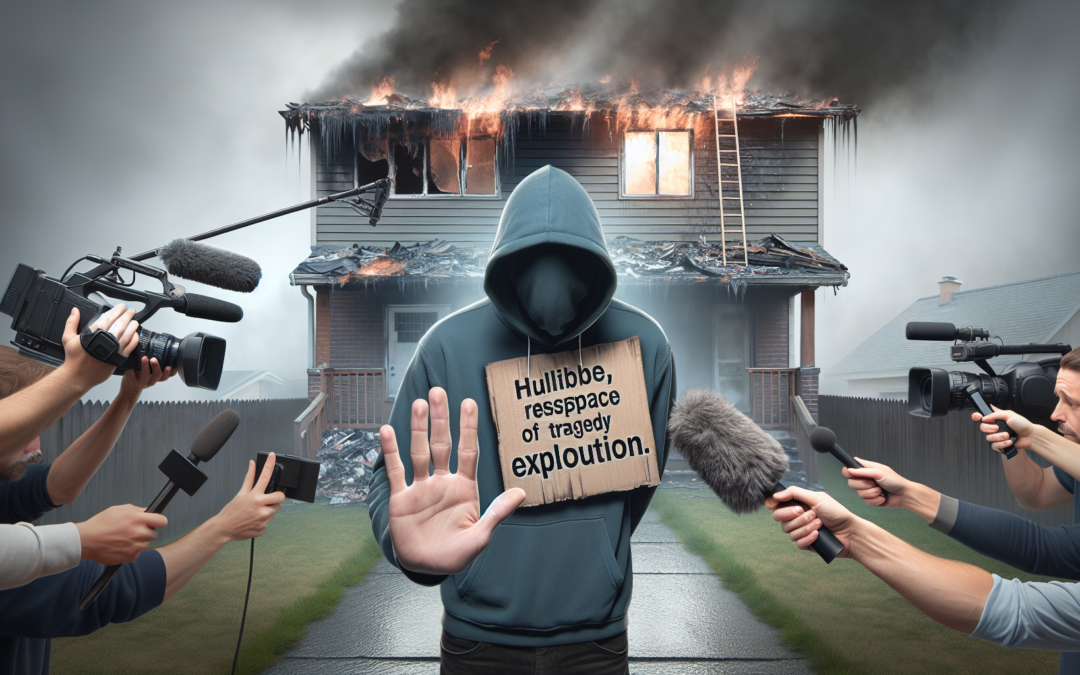The Thin Blue Line in the Age of Moral Ambiguity
In the digital age, where everyone with a smartphone can claim to be a journalist or a watchdog, the profession of law enforcement has become not only about upholding the law but also about contending with moral and ethical dilemmatic confrontations. This complex reality is underscored by a recent viral video showing a self-styled First Amendment “auditor” who brazenly confronted officers, while flagrantly disregarding the humanity of fire survivors in their moments of unfathomable vulnerability. This troubling incident is more than a single event; it is a reflection of the broader societal issues law enforcement encounters today.
A Battle on Multiple Fronts
Police officers have always been the stewards of public safety, constantly navigating threats both visible and covert. Yet, the challenges they face today have taken a peculiar turn. Instead of focusing solely on keeping neighborhoods safe or dismantling criminal enterprises, officers must also engagedly protect “audited” spaces against those devoid of empathy, whose sole mission is to spark viral moments and disparage the duties of law enforcement.
Such confrontations, as seen here, boil down not to transparency or accountability but to an antagonistic pursuit of conflict. By pitting freedom of press against respect for victims’ dignity, these cameras infringe not on the right to information, but on the sanctity of mourning—a costly intrusion not felt by the person holding the lens, but by the defenseless individuals who find themselves on display in the most inopportune times.
An Increasingly Antagonistic Environment
For many officers, the presence of an “auditor” signifies more than a test of comprehensive knowledge of the First Amendment; it’s a harbinger of provocations that often have malevolent or profit-driven intentions. In most urban landscapes, especially within areas plagued by violence or calamity, these individuals seek confrontation by provoking emotional responses intended to portray officers in compromising lights.
While there are undoubtedly cases where genuine concerns about authority accountability warrant scrutiny, these “auditors” typically find themselves embroiled in disputes not aimed at truth or justice but at viewership statistics. The loss of trust by engaging communities emerges as their collateral damage—a voice understated but profound in its silence. Links like this seek to leverage such moments for personal gains, unconcerned with the societal repercussions.
Navigating the Legal Labyrinth
The rigid legal landscape law enforcement navigates complicates their role against these vexing encounters. Officers are taught and required to understand and assert citizens’ constitutional rights, yet they must also strike an intricate balance respecting jurisdiction while maintaining civic order. The thin line—often blurring between constitutional affirmation and chaotic instigation—tests the officer’s mettle, patience, and poise.
Each encounter serves not only as a test of legal comprehension but as a right-of-passage, testing the resilience and resolve of seasoned veterans and rookies alike. For every second of footage misconstrued or proclaimed as evidence of misconduct, numerous hours of maintaining the peace are undermined—an unforgiving cycle that digitally runs aground every interaction with an “auditor.”
Beyond Just Surviving
As they tire intellectually and emotionally with the rise of these interactions, officers have dealt with increasing degrees of public scrutiny that complicate their duty to protect. An incident born to gain likes and shares virtually translates into an actual decline of law enforcement efficacy, not through resistance or reluctance, but through demoralization.
Against this backdrop, officers, having donned the badge with immense pride and purpose, endeavor not just to disarm physical escalations but also the public misperceptions fanned by skewed enthusiasm. Each moment caught behind the cruiser spotlight becomes one not merely replaying tactics but analyzing replayed images digitally immortalized and subjected to public debate. The internal struggle between upholding rights and commanding authority becomes ever-present.
A Call for Empathy and Equity
To course-correct not merely these moments of tension-cum-entertainment but also to address public mindset, emphasis on empathy must underscore the equitable voices within our discourse regarding civic duty. Understanding the symbiotic relationship between the notions of freedom and respect incarnates those often- overlooked moments seldom captivating highlights across newsfeeds but undeniably impacting societal cohesion.
By fostering truthful dialogues and uplifting narratives centered on genuine transparency, we lay foundations for cohesive law enforcement paradigms driven not by viral metrics but genuinely upheld community partnerships. Officers and citizens alike stand to benefit from an ethos aimed purely at building equitable governance frameworks enriching each contributing voice.
You can explore thoughtful discussions like these further through platforms such as The John Ligato Show. Partnerships acknowledging the multifaceted dimensions of law-enforcement foster future climates both coexistent in foundation and bold in their communities’ protection. As such, our responsive approach ought now to champion not challenges divisive but methods defining togetherness and resilience emboldened by mutual understanding and mutual respect.

Recent Comments